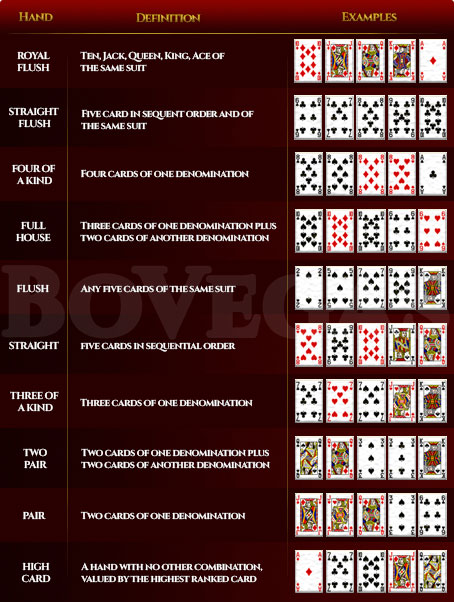



As you probably already know, five-card draw poker has long since given way to Texas Hold’em, as the latter is generally considered the number one game worldwide. However, it used to be rather a popular pastime in the Wild West, when nearly every cowboy was ready to match their strength with each other at the local saloon over a schooner of beer. But as time went on, things began to change; and now draw poker is perceived as more of a home entertainment than a casino one. However, it is still around, and it is still well-liked by many players who are ready to prove their skill at this exciting game.
The central feature of draw poker is that participants get a complete hand from the jump, and then exchange cards to achieve the best result.
Many people believe that draw poker is the predecessor of all known poker types; and the stud version most probably originated from draw poker. So the backstory of California poker, as it is often called, is inseparably associated with the onset of modern poker.
Right from the very start, and up to 1930s, draw poker was the top favorite among card game lovers, and it was played much more often than other poker types. Such popularity arose from certain occurrences in the early 20th century in Nevada.
For the state of Nevada, the year 1910 was marked by a new prohibition on gambling activities; all except draw poker, which had a lot of fans among men of high status. The truth is that the California Department of Justice made a statement that draw poker ought not to fall under the anti-gambling law; since the outcome of game of draw poker is not based on luck, but on the skill of people who play it.
All varieties of stud, the main rival to draw poker, were banned in Nevada; as it was believed that this particular version of poker based on luck, and therefore posed the biggest risk to those players who were more prone to gambling addiction. Thus, thanks to the law, draw poker has turned into the prevailing variation for many years.
Today more complex variations have replaced the time-honored boodle version. However, when speaking about poker, it is often the opening for newbies and is a basis for video poker widely played by its admirers.

At the end of the first round of betting, players begin to replace their cards, and this can be done only once. Gamblers exchange between one and five cards, and then they start the last round. The winner, as with other games of poker, is considered the one who knocked out the rest of the players with their bet, or collected the best combination (from the kicker to Royal Flush). In addition to the basic rules, two more features are applicable only to five card draw poker:
Also, several types of 5-card draw poker can be distinguished:
As for Fixed-Limit Draw Poker, the rules are as follows: players bet and raise a strictly defined amount, which is determined by the table limit. That is, at the $2/$4 table in the first round of betting, the bets are equal to $2. After exchanging, the bets have to be proportional to $4, and players can make no more than four bets ($8 in the first round of betting and $16 after the draw, respectively. Gains and losses are generally small.
Pot-Limit Draw Poker: in both betting rounds, players can make bets ranging from the amount of the big blind or of the previous bet (if playing with blinds) to the current sum of the pot (including the total amount of bets made before the player, plus their call amount). When playing with ante, participants can make bets ranging from the amount of the bet made by the player with the weakest door card to the current value of the pot. For example, if in the first betting round the pot is $10, and the bet before yours was equal to $5, then you can raise in the range from $15 to $20).
No-Limit Draw Poker – in each of the rounds, players can place a bet of any size (but not less than the table limit). So a player can go all-in any time. Here you can face the maximum variance and the considerable losses and wins.
For each stage of five-card draw poker, there is a separate strategy that will help you to end up a winner. Each of the offered tips is a recommendation, based on the advice of some professional players, each having their own approach to shaping a poker guide. Whether to adhere to this strategy or to develop your own is, of course, entirely at your discretion.
1. Before the Draw
2. Drawing
3. After the Draw
Five-card draw poker may be old hat in the world of poker, but even so, it has managed to play an important part. Up to now, the various poker communities out there cannot afford to ignore this particular variation of the game, due to the simplicity of its rules, and the thrill the gameplay offers; and they really do love and respect the 5-card draw. However, it is important not to be misled by its simple rules; because getting a winning strategy is much less simple than learning the rules! Those who want to learn not only to play but also to win, will have to work hard.

Roulette is an utterly engaging casino game of chance. It’s a classic form of gambling entertainment, which has managed remain tremendously popular since it was first invented in 18th century France. Roulette was allegedly first developed by Blaise Pascal, a renowned French mathematician and inventor, who was experimenting with some very novel and innovative devices; […]
Those who enjoy gambling online and use cryptocurrencies should visit some of the major events of 2019 that are dedicated to crypto games. There’s nothing better than some great discussions with the leading specialists of the crypto gaming industry about current and future trends. Cresting the wave in the deep sea of crypto gaming is […]
A rapturously acclaimed and epic casino table game, roulette traces its history back to as early as the 17th century! The number of roulette players has now reached up to several thousand enthusiastic gamers who are all fervent devotees of the bright checkered wheel, the legendary symbol of roulette. So far, the realm of roulette […]
Glamorous interior, expensive champagne, exclusive invitation-only guests, and an overall excitingly luxurious atmosphere, which is pretty close to an Oscars party. No, it’s even better! Because nobody’s hand you a human-size bottle of costly rose champagne after you nail a few blackjack games at the Oscars. It’s all about the one and only (truly glorious!) […]
If you love gambling and have been to a land-based casino at least once, you may have thought about becoming a dealer. Playing the same game but from the opposite side, while communicating with other players, sounds like a dream job, right? A dealer is a straightforward job, and you will be the heart and […]
On Monday September 14, MGM announced that it plans to open its first smoke-free casino at the end of September, when Park MGM will finally reopen its venues to players and tourists. The resort comprises around 2,990 rooms and various restaurants, and it’s set to be reopened on September 30. The venue has been closed […]
Online gambling has undoubtedly taken a place of true supremacy over the casino industry during the pandemic. And the reason for that is quite clear: online casinos are more accessible, and you can always count on some encouragement from the casino administration to help you boost your game. However, this digital revolution has only been […]
The large selection of online gambling sites out there can make players somewhat puzzled, and give them a feeling of uncertainty about making the right choice of casino. Each online gambling venue offers its own conditions, games, and various bonuses, of course; but the most important thing is the reliability of the casino and the […]